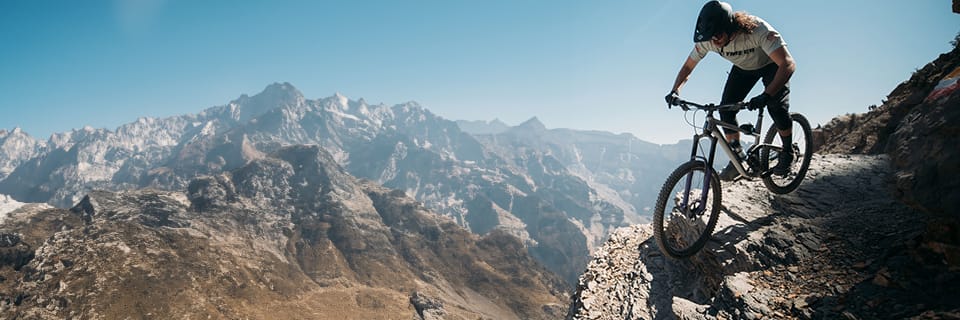Visit MTB wheels must be chosen with the utmost care, as they play a vital role in the performance of your mountain bike. Note that to make a bike dynamic, you need to save weight on the rotating parts. And what could be more voluminous and constantly rotating than a set of wheels? Here's what you need to make your choice.
Standard wheelsets
- The sizes of mountain bike wheels for an adult bike: 26"; 27.5"; 27.5+ and 29".
- Rim profiles and materials
- Type of tire mounting: tubetype or tubeless
- Spoking types
- Hub types
- Wheel axle types
- Types of mountain bike brakes V-brake or disc
- Boost format
Wheel types
Diameter, rim, spokes and hub are the main elements that determine the specific features of a wheelset.
There are several wheel diameters available on the market. The 26", which was the historical standard diameter, is gradually losing its place with the arrival of new ones, notably the 27.5", which offers very similar handling for greater comfort and the 29" MTB wheelMTB wheel, acclaimed for its excellent climbing ability and speed. As for the 27.5+, it offers greater spoking rigidity and allows wider tires to be fitted for better grip on all kinds of terrain.
To choose the right tire sectionyou can consult our advice guide: How to choose your mountain bike tires
About the rimsThe wider the rim, the stiffer and more resistant it will be to lateral forces. What's more, a wide rim provides a greater volume of air for the same tire, to better absorb relief. And the higher the rim, the more rigid and robust it will be in the face of frontal forces. But this has a direct impact on weight. So it's very important to choose a rim whose width and height are adapted to your mountain biking needs. Most rims are made of aluminum, for a good strength-to-weight ratio, but there are also a few carbon models for added weight and responsiveness, while retaining a certain level of comfort and impact resistance. What's more, the spoking is less stressed than on aluminum wheels, which means less maintenance. The budget for carbon wheels is starting to shrink, with suitable models starting at €1,000.
Tubetype or Tubeless? The advantages of a tiresTubeless tires are undeniable: fewer pinch punctures, the possibility of riding at lower pressures to increase grip and comfort, a greatly reduced risk of punctures with the addition of preventives, and significant weight savings when mounting Tubeless Ready. Note that it is always possible to convert a wheelset to Tubeless if it is not the original one, thanks to conversion kits.
Visit shelving ensures a perfect connection between hub and rim to transmit power, braking forces and directional changes; but it also tolerates a certain amount of deformation to provide comfort and strength. Spoking is defined by the number of spokes on a wheel and the type of crossing (lacing). The most classic, and still the most reliable, is made up of 32 spokes crossed by 3 (one spoke always crosses 3 others), but to lighten the wheels the number of spokes can be reduced and the type of lacing can vary according to the discipline.
The hub contains the ball bearings that rotate the wheel. They can be either "cone/cup" type A type, requiring more regular maintenance but generally reliable over time; or the "sealed bearing" type. B maintenance-free (simple bearing replacement when defective). This part also provides the interface between the rest of your wheel and the bike, depending on the axle standard. Some brands offer hubs convertible to all (or almost all) standards, simply by fitting a set of adapters.

Concerning the wheel axle typewheel axles, it's worth noting that standards have multiplied of late. The choice has therefore become more complex, and you need to be sure of compatibility.
At the front, we most often find the 9x100 mm quick-release axle, or the 15x100 mm thru axle. There's also the 15x110 mm "Boost" for use with 27.5+ wheels, the 15x110 mm Predictive Steering for use only with Rockshox RS1 forks, and the 20x110 mm.
At the rear, the most popular axles are 9x135 mm or 12x135 mm, 12x142 mm, 12x148 mm (Boost) or 12x150 mm.
Choosing a cassette is determined by the freewheel body of the wheel, so it's important to choose the right one for your sprockets: How to choose your MTB cassette ?
Finally, as regards the brake assemblythe number of models designed for the V-Brake system is declining, and disc brakes have taken their place. Two mounting standards are available: Center Lock 1 from Shimano / DT Swiss (or AFS from Fulcrum) and the 6-hole 2.

What is the Boost format?
New MTB frame geometries and the use of increasingly wide 27.5" and 29" tires have forced manufacturers to develop new standards. Some bike models require axles that are a few millimeters longer, called "Boost", a format that appeared in 2015.
The front axle is now 15x110 mm. A and the rear to 12x148 mm B. The chain line is also different (52 mm instead of 49 mm). C impacting on crankset dimensions and chainring Offsets.
The benefits:
It is possible to convert certain wheel pairs from 12x142 rear and 15x100 front to 12x148 and 15x110 with conversion kits (check compatibility before purchase).

Which wheels for my riding?
For the most dynamic riding possible, the ideal is to find the lightest yet strongest wheelset for your mountain biking needs. The choice of diameter will depend on the rider's size and frame geometry. For other characteristics, here's what we recommend:
-
Hiking
For touring, a classic spoking rim is the most reliable. A rim 20 to 24 mm wide will give you a good compromise between strength and comfort.
-
Cross-Country
For XC outings, if it's performance that interests you, consider carbon wheels, but you'll also find some very good aluminum wheels with low spoking to keep the weight down. For performance and lightness, choose a model wider than 24 mm.
-
All-Mountain / Enduro
You can opt for either classic spoking for reliability, or a little less spoking for greater dynamism. A rim between 28 and 35 mm will give you all the comfort and strength you need.
-
DH / Freeeride
For DH / Freeride, classic spoking is almost mandatory to limit the risk of breakage. All this on a rim width of 28 mm or more, for maximum tire volume.
-
VTTAE
Wheels are specifically designed for this type of riding, with rim profiles from 30 mm upwards and thicker. Spokes are oversized and more robust. Hubs are also more resistant to withstand engine torque and higher loads.
Découvrez tous nos conseils & Tutoriels
MTB - Wheels 29"
-

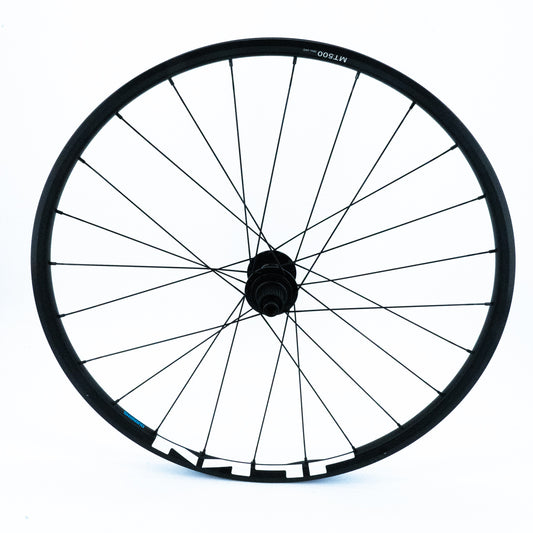
Pair of SHIMANO WH-MT500 29'' Axle 15x110/12x148mm Boost Wheels
Regular price 129,90 €Regular priceUnit price per -
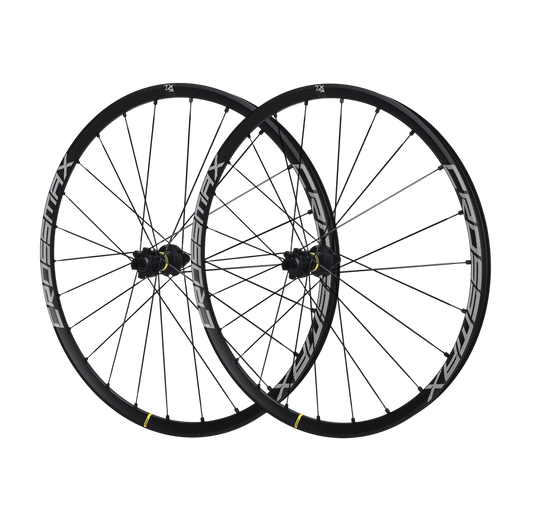
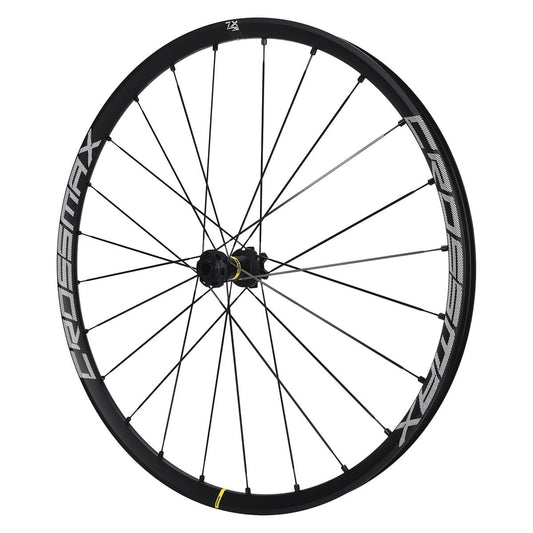
Pair of MAVIC CROSSMAX XL 29" Wheels 15x110mm/12x148mm Boost
Regular price 449,90 €Regular priceUnit price per -
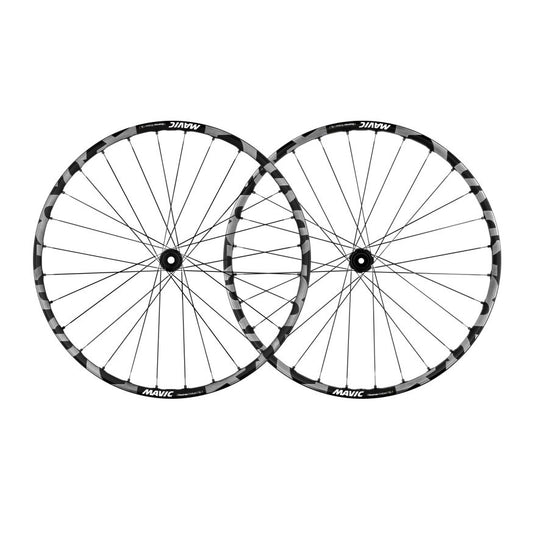

Pair of MAVIC DEEMAX ENDURO SL 29" 15x110mm/12x148mm Boost Wheels (Black Friday)
Regular price 699,90 €Regular priceUnit price per -
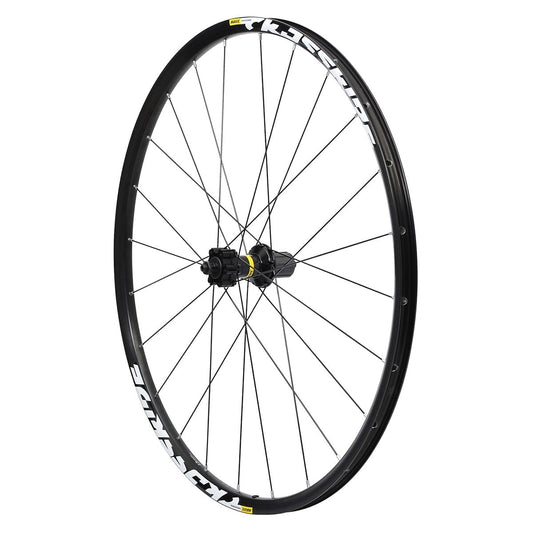
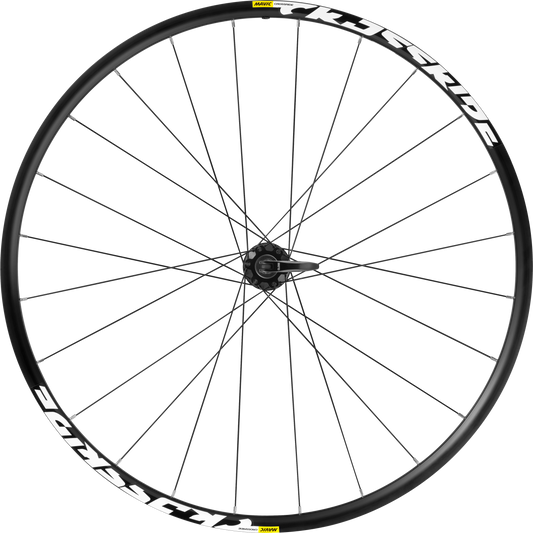
MAVIC CROSSRIDE FTS-X 29" 9x135 mm rear wheel
Regular price 145,90 €Regular priceUnit price per -
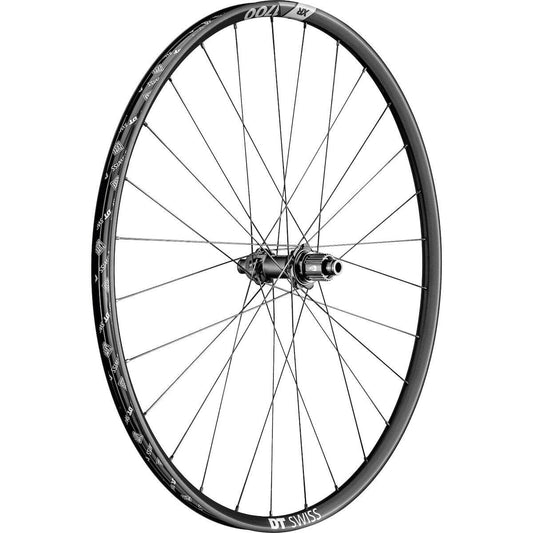
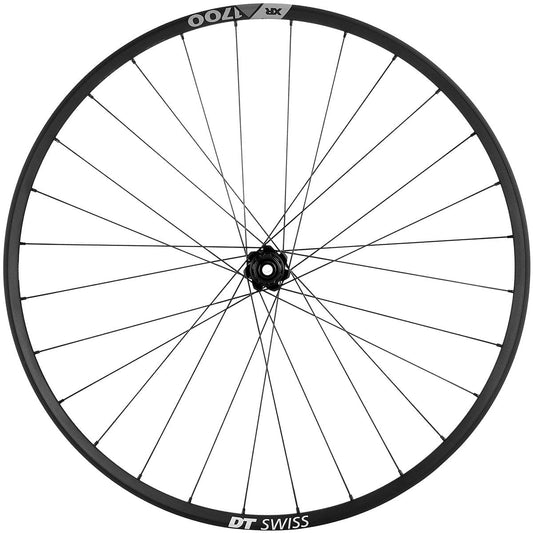
DT SWISS XR 1700 SPLINE 25 mm 29" 12x148 mm Boost rear wheel
Regular price 349,90 €Regular priceUnit price per -
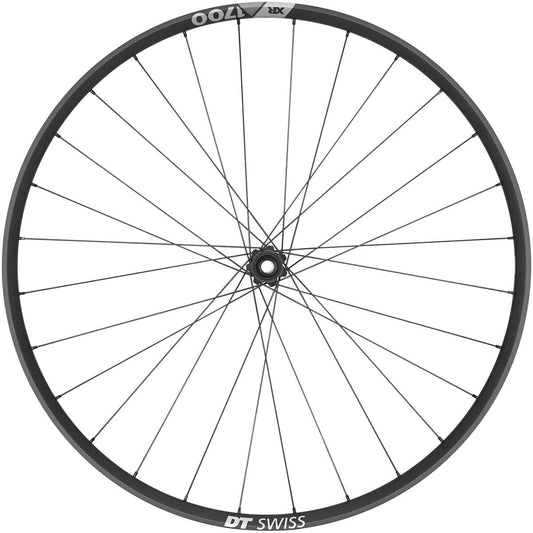
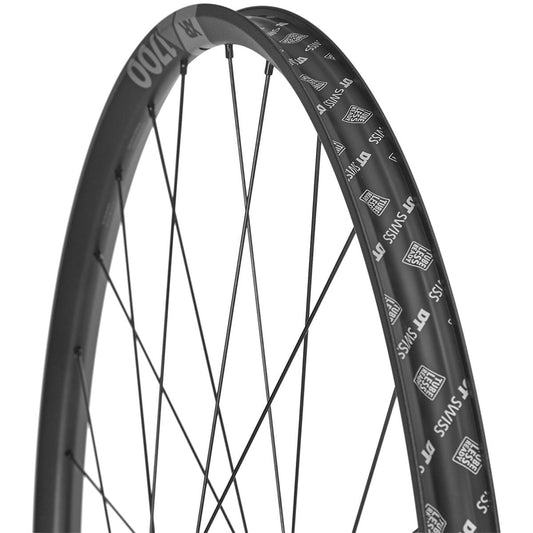
DT SWISS XR 1700 SPLINE 25 mm 29" 15x110 mm Boost front wheel
Regular price 249,90 €Regular priceUnit price per -
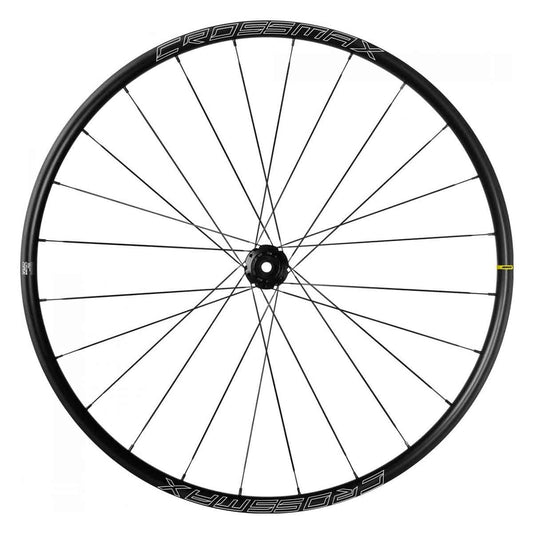
MAVIC CROSSMAX 29" 12x148 mm Boost rear wheel
Regular price 199,90 €Regular priceUnit price per -
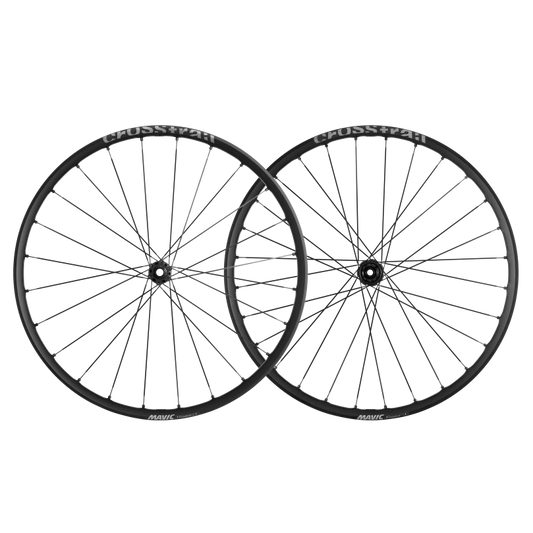
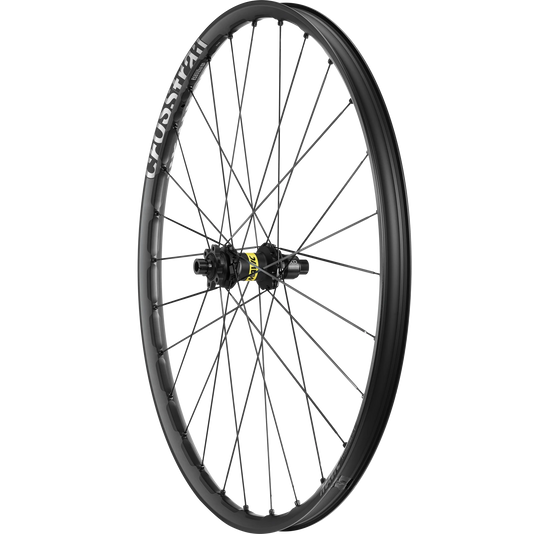
Pair of MAVIC CROSSTRAIL SL 29" Wheels 15x110mm/12x148mm Boost
Regular price 579,90 €Regular priceUnit price per
